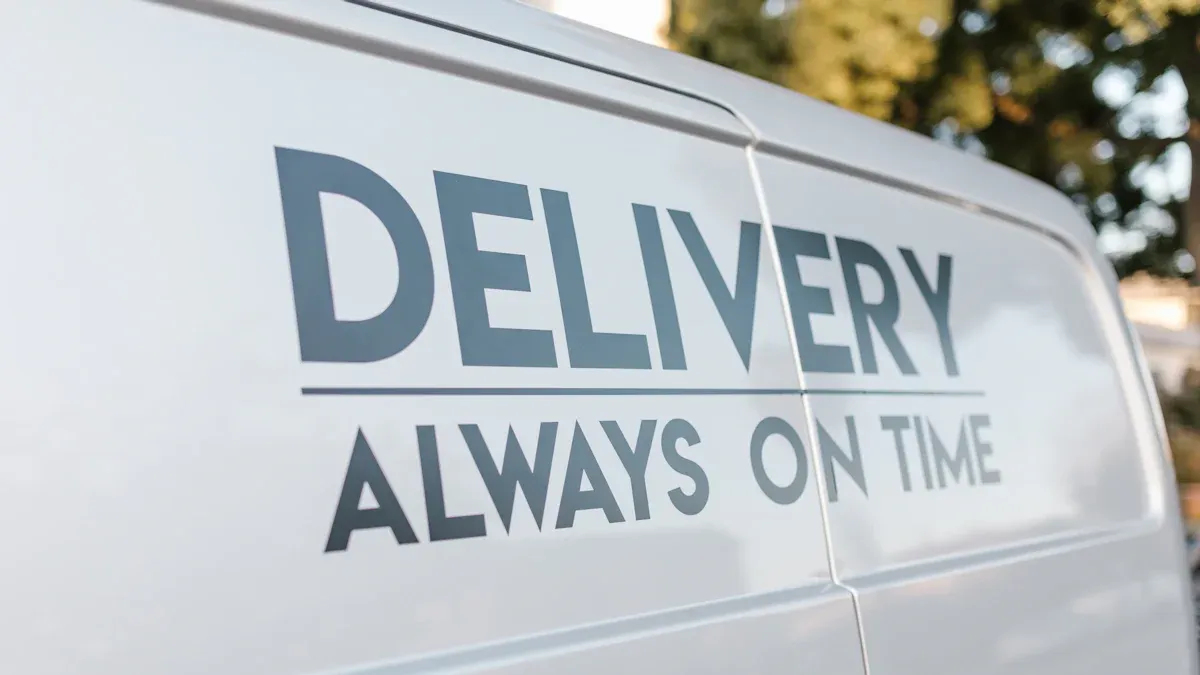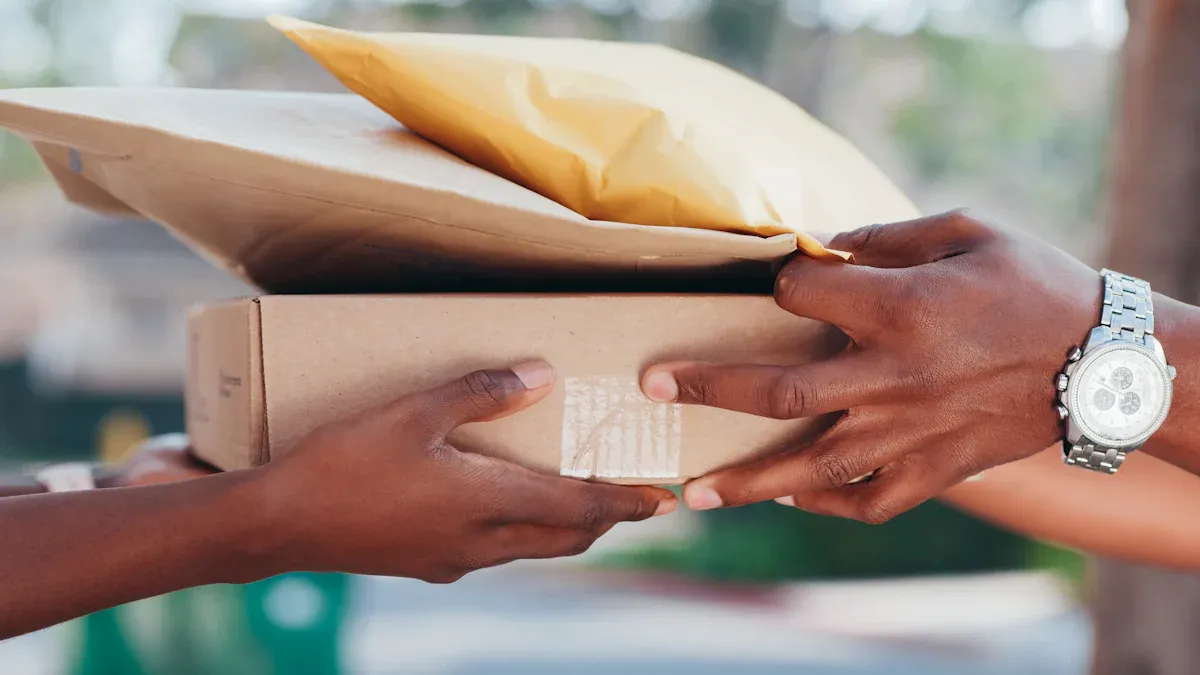How to Track Your Shipment Timeline with Logistics Platforms

You want to know where your package is and when it will arrive. Real-time shipment timeline logistics tracking gives you that power. With tracking tools, you get accurate delivery updates, clear communication, and fewer surprises. These platforms help you solve problems fast and keep everyone in the loop.
Key Takeaways
Always start by locating your tracking number. This number is essential for monitoring your shipment's journey.
Choose a logistics platform that fits your business needs. Look for features like real-time updates, integration capabilities, and user-friendly dashboards.
Stay proactive with tracking updates. Use real-time alerts to quickly address any delays or issues that arise during shipment.
Shipment Timeline Logistics Tracking

Find Your Tracking Number
Before you can start tracking, you need your tracking number. This number acts like your shipment’s fingerprint. You can find it in a few different ways:
Check your shipping confirmation email or receipt. Most carriers include the tracking number there.
Visit the carrier’s website and look for your shipment using your order number or bill of lading.
Ask your logistics manager or the person who arranged the shipment. They often have direct access to tracking details.
Some companies use AI-powered systems that send you tracking numbers automatically.
Once you have your tracking number, you’re ready to follow your shipment’s journey.
Use Logistics Tracking Platforms
Now that you have your tracking number, it’s time to use a logistics tracking platform. These platforms make shipment timeline logistics tracking much easier. You can see updates in real time, spot problems early, and keep everyone informed.
Here are some popular platforms businesses use:
Stackby: Lets you build custom dashboards and get real-time notifications. It works with many other tools and is easy to use, though setting up advanced features takes a bit of time.
Zoho Inventory: Connects to different sales channels and tracks shipments as they move. It’s great for automation but may take a little practice to master.
Veeqo: Syncs inventory across channels and gives you real-time tracking. It’s free for basic features and has good support.
Salesorder.com: Combines shipment tracking with customer management and cash flow tools. It’s powerful and scalable, but setup can take a while.
Tip: Choose a platform that matches your business needs. Some platforms work best for certain industries, like pharmaceuticals, where you might need temperature tracking.
Let’s compare some features you might find in these platforms:
Feature | Description |
|---|---|
Helps you and your team see where shipments are at all times. | |
Industry Specialization | Some platforms offer special tools for certain industries, like cold storage for medicine. |
Integration Capabilities | Connects with your other systems, like inventory or sales software. |
Scalability | Grows with your business, handling more shipments as you expand. |
Security | Keeps your shipment data safe and private. |
User Experience | Easy-to-use dashboards and clear updates make tracking simple. |
Enter and Monitor Shipment Status
Once you log in to your chosen platform, enter your tracking number. The system will show you the current status of your shipment. You’ll see updates like “in transit,” “out for delivery,” or “delivered.” Some platforms even show a map with your shipment’s location.
Shipment timeline logistics tracking platforms do more than just show where your package is. They help you spot problems early. For example, if there’s a delay or an exception (like a missed delivery), you’ll get an alert right away. Here’s how some platforms handle updates and exceptions:
Platform | Features |
|---|---|
Shapiro 360° | Sends real-time alerts if something goes wrong, so you can act fast. |
AfterShip | Gives you instant updates and helps you fix delivery delays quickly. |
FourKites | Offers custom alerts and advice on what to do if there’s a problem in transit. |
Cahoot | Shows you delivery status and explains any exceptions, so you know what’s happening. |
You can also use dashboards and charts to see trends in your shipments. Many platforms let you:
View all your shipments in one place, even if they come from different sales channels.
Get reports that show how long deliveries take or where delays happen most often.
Use maps to see where your shipments are and spot any trouble spots.
Note: Real-time shipment timeline logistics tracking helps you keep customers happy. Surveys show that customers trust companies more when they get clear, timely updates about their orders. If there’s a delay, a quick alert lets everyone adjust their plans and reduces stress.
Tracking software also brings big benefits for your business:
Makes your workflow smoother and faster.
Improves customer experience with clear updates.
Cuts costs by catching problems early.
Helps you manage inventory better.
If you ship across borders, tracking platforms handle international updates, too. They follow your package from the first pickup, through customs, and all the way to the final delivery. You get updates at every step, so you always know what’s happening.
Shipment timeline logistics tracking gives you the power to see, manage, and improve your shipping process. With the right tools, you can turn shipping from a headache into a smooth, reliable part of your business.
Understand Updates and Solve Issues

Read Tracking Statuses
When you track your shipment, you see different statuses. Each status tells you something about where your package is or what is happening to it. Here are some of the most common tracking statuses you might see:
In Transit: Your package is moving between locations. It is on its way to the next stop.
Out for Delivery: The carrier is delivering your package today.
Delivered: Your package has arrived at its destination.
Exception: Something unexpected happened. This could mean a delay or a problem with delivery.
Resting: Your package is waiting at a facility before moving again.
Misplaced: The carrier cannot find your package right now.
You might also see exceptions that explain why your shipment is delayed. Here is a table with some reasons for shipment exceptions and what they mean:
Reason for Shipment Exception | Description |
|---|---|
Clearance customs delays | Packages can be delayed at customs due to regulatory issues during international shipping. |
Missing documentation or incorrect address | Packages flagged due to wrong or missing delivery address information. |
Holidays | Delivery delays can occur during peak holiday seasons, affecting the delivery process. |
Natural disasters and bad weather | Severe weather conditions can disrupt package delivery, leading to exceptions. |
Damaged package | Packages held for inspection due to damage during transit may be marked as exceptions. |
Tip: Real-time notifications from logistics platforms help you stay updated about these statuses. You get alerts if there is a delay or exception, so you can act quickly.
Handle Delays or Missing Info
Sometimes, you might notice your tracking information has not changed for a while. This can feel frustrating, but you have steps you can take to figure out what is happening. Here are some common reasons for shipment delays or missing tracking updates:
Sudden changes in demand can slow down shipping.
Port congestion or trucking issues may cause delays.
Bad weather can stop shipments from moving.
Customs or regulatory problems can hold up your package.
Mechanical failures or labor shortages can slow things down.
Incorrect addresses or missing paperwork can cause delays.
Peak seasons, like holidays, often create bottlenecks.
If your tracking status does not update, try these steps:
Check your tracking number on the carrier’s website. Sometimes updates take a little while to show up.
Use a real-time tracking platform for more detailed updates. Some platforms offer better visibility than carrier sites.
If you see no updates for 48 hours, contact customer service for help.
Note: Automated alerts from shipment timeline logistics tracking platforms let you know about delays right away. These alerts use advanced technology to give you accurate, real-time data. You can respond faster and keep your customers informed.
You can also use dashboards and analytics tools to spot patterns in delays. This helps you find and fix problems before they get bigger. Many logistics platforms connect with other supply chain tools, so you see everything in one place and solve issues faster.
Get Support When Needed
Sometimes, you need extra help to solve a shipment problem. Logistics platforms make it easy to reach out for support. Here are some ways you can contact customer service:
Phone support
Email support
Live chat support
Social media support
Most logistics companies reply to emails within about 12 hours, which is faster than the average for other industries. If you need a quick answer, try live chat or phone support.
Tip: When you contact support, have your tracking number and shipment details ready. This helps the team solve your problem faster.
Good communication is key. Keep your messages clear and polite. Share real-time updates and explain the issue. If you work with a supplier or customs, talk openly and suggest solutions. For example, you might ask about expediting shipping or fixing paperwork.
Logistics platforms also help you communicate with your team. You can use in-platform tools to share updates, assign tasks, and keep everyone on the same page. This makes it easier to solve problems and keep your shipments moving.
Note: The best way to avoid future issues is to use shipment timeline logistics tracking tools that offer real-time alerts, clear dashboards, and strong integration with your other systems. Regular audits and staff training also help keep your tracking accurate and your customers happy.
You can track your shipment timeline by following these steps:
Book your shipment.
Collect the package.
Watch it arrive at terminals.
See it go out for delivery.
Confirm delivery.
Using logistics platforms gives you real-time tracking, accurate updates, and a smoother shipping experience. You gain full visibility and build trust with your customers.
FAQ
How often do logistics platforms update shipment status?
You usually see updates every few hours. Some platforms send real-time alerts, so you never miss a change.
Can I track multiple shipments at once?
Yes! Most platforms let you see all your shipments on one dashboard. You can check each one with just a click.
What should I do if my tracking number does not work?
Double-check the number for mistakes. If it still does not work, contact your carrier or the shipping company for help.
See Also
PGL Ensures Your Online Inventory Is Always On Schedule
Reliable Ocean Freight Services by PGL from Major U.S. Ports
Top Logistics Provider for Last Mile Delivery on the East Coast
Simplifying Supply Chain Management with U.S. Logistics Solutions
